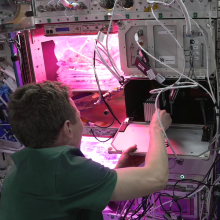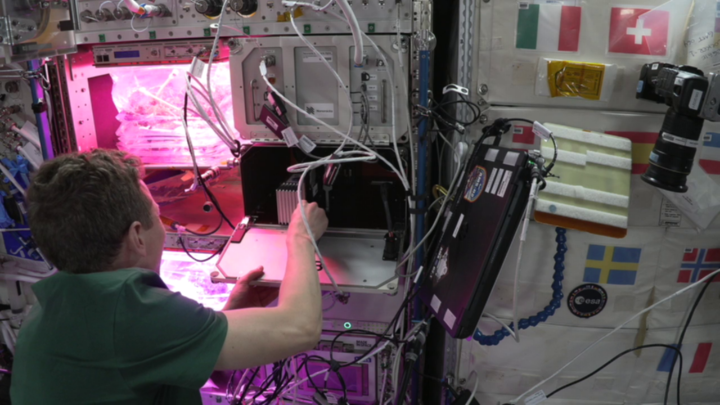After spending approximately four weeks on the International Space Station (ISS), the ferrofluid experiment from the University of Stuttgart has returned. "We are very pleased," says Daniel Philipp, head of in-orbit operations and co-leader of the FARGO electronics team at the University of Stuttgart. The students managed to run all three experiments and successfully perform at least basic functional tests on each. "We have thus proven that our ferrofluid technologies are suitable for use in space."
The new technologies are more reliable and cost effective
With the experiment, the students aimed to test new technologies for space travel that are more durable, more reliable, and thus also more cost-effective than other technologies. FARGO stands for Ferrofluid Application Research Goes Orbital. The team tested a thermal switch that controls the transfer of heat between two components, an electrical switch that closes and opens a circuit, and a new system for controlling the position of small satellites. All experiments are based on ferrofluid technology and do not require mechanical parts. This significantly reduces the risk of defects due to wear.
When the astronauts installed the experiment in the experimental cabinet on the ISS, there were some initial difficulties. "Actually, the experiment was supposed to start fully automatically and work through the experiment list, but that didn't work," says Steffen Großmann, who is responsible for FARGO's electronics and software. The FARGO team quickly began to recreate existing problems on the ground reference model, developing and testing alternative solutions. "Eventually, using a new method, we were able to implement semi-automatic operation of the experiment with regular new updates from Earth. We developed and adjusted new plans almost every day. "That phase was really hard work for us."
The experiment with the electric switch was particularly challenging: "We only managed to start it two days before the end of the mission. The liquid metal contained in the electrical switch tends to degrade over time and then become less responsive to magnetic fields. Presumably, our sample in space had this problem. It was only when we used a new type of control using pulsed magnetic fields that the experiment worked on the ISS," says Großmann.
The project findings
But all the extra hours of overtime and headaches were worth it. "The fact that we ultimately managed to successfully run all three experiments is a great success for us," sums up Philipp.
This means:
- The gyro system could be started and operated at the desired target speed, and at different speeds.
- The thermal switch could be controlled in a targeted manner and behaved according to the expectations of the FARGO team. This was achieved in multiple test series and endurance tests.
- The electrical switch could switch electrical loads and perform multiple targeted switching sequences repeatedly.
What happens next? Later this week, the original experiment will be back onsite at the university and the students will be able to view real space performance data from the developments, as well as images and videos of how the experiment performed on the ISS. The students then plan to present the detailed results at expert conferences.
Press release, March 17, 2023: Student experiment arrives on ISS
| Contact | Manfred Ehresmann, Institute of Space Systems, University of Stuttgart, e-mail, phone: +49 711 685 69599 |
|---|



